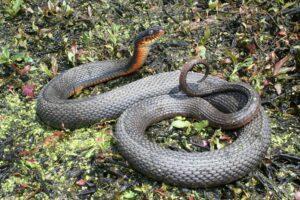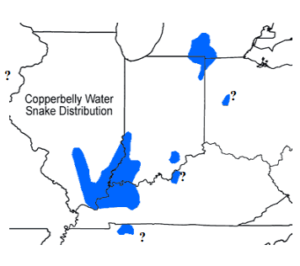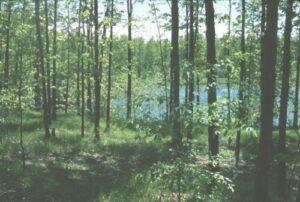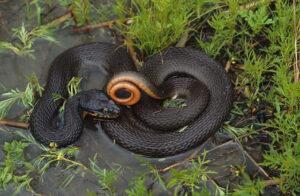Copperbelly Water Snake (Nerodia erythrogaster neglecta)
Updated on
25/04/2024The copperbelly water snake is a medium to large, stout-bodied colubrid of the Central United States that spends less time in the water than the regular water snakes. It requires vast wetland-upland complexes to match its widespread range and movement patterns. The species is threatened due to its habitat loss. A permit from the U.S. Fish and Wildlife Service is required for possessing these rare snakes.
Scientific Classifications
- Suborder:Serpentes
- Family:Colubridae
- Genus:Nerodia
- Species:N. erythrogaster
- Subspecies:N. e. neglecta
Conservation Status
Description
Size
Adults reach a total length of 3-5 ft (91-152 cm). The length of the longest snake of this subspecies recorded is 5.46 ft (166 cm)
Color and Appearance
Their back is of dark color, usually, black but also bluish and brown, with the belly of bright orange-red color.
Are They Dangerous to Humans
The snake is very aggressive and active. If attacked or threatened, it vents its foul-smelling musk and may bite. But being non-venomous, it is not dangerous.
Copperbelly Water Snakes at a Glance
Habitat
Copperbellies inhabit lowland swamps and other quiet, warm waters. They are often found in shallow wetlands that draw down seasonally, like isolated wetlands in wooded uplands, floodplain wetlands fed by seasonal floods, or a mixture of both. Individuals move 100 m or more between wetlands and use many of them regularly during their active season. They use fishless wetlands, having a high population of frogs and toads for foraging.
Lifespan
This snake can live for 6-9 years.
Predators
Its predators include cottonmouth snakes, snapping turtles, otters, large aquatic birds, raccoons, red-shouldered hawks, large fish, and mink.
Reproduction
Viviparous (gives birth to live young)
Courtship and mating mainly occur in spring and may continue till summer. Males seek females and group around them. ‘Mating balls’ may be observed with multiple males surrounding a relatively immobile female, intending to mate. The average litter size is 18. The largest recorded brood size is 38.
The juveniles have a reddish-brown, two-toned saddle-like cross band pattern in a pinkish background. Their chins and lips are reddish-orange, while their bellies are light orange colored.
FAQs
Ans. Many significant populations of the copperbelly are now extirpated. Only 5 of them remain but are very small. Even the largest population in Ohio is on the decline, with the adults numbering just a few hundreds or even less.
Ans. They are endangered because their wetland habitats are getting destroyed by the construction of houses, roads, shopping malls, and other developments. The copperbelly snake needs a large number of wetlands spread over a wide area for survival. Destruction of any part of their habitat leads to their death since their predators take them if they travel across cleared land.
Source
fws.gov, efotg.sc.egov.usda.gov, mnfi.anr.msu.edu, live.staticflickr.com









